Art Alert! The Case Of The Masterpiece That Wasn't
Muse Science Magazine for Kids
|July/August 2018
Han van Meegeren was a painter with a problem. He tried to sell artwork under his own name, but the critics of the 1920s weren’t keen on it. They were excited by newer, abstract forms of art, like cubism or surrealism. Van Meegeren, on the other hand, painted in a very traditional, realistic style.

The Dutch artist decided to trick the art world. He wanted to prove that he could paint just as well as any of the famous old masters.
Van Meegeren became an art forger. A forger creates art but claims a famous artist made it. He or she may sell this fake work for lots of money. Van Meegeren was one of the most successful art forgers of all time.

A Vermeer Is Born
First, which artist to forge? Van Meegeren was particularly fond of Dutch painters from the 1600s, like Rembrandt van Rijn and Frans Hals. But wait. There was another Dutch painter: Johannes Vermeer. Only about 35 of his paintings were known. Van Meegeren couldn’t directly copy one of those, as the owner of the original painting might point out the copy. But how about producing a whole new “Vermeer”?
Vermeer’s history happened to have a gap. Scholars weren’t sure what the painter was up to during that time. So maybe van Meegeren could produce a painting from that period. Scholars suspected Vermeer had gone to Italy. Van Meegeren could make it look like his painting had been influenced by old Italian masters. He could also give his Vermeer a religious subject matter, so it would seem like it came from a “lost religious period” in the artist’s work.
With Vermeer on the brain, van Meegeren got to work.

The Long-lost Supper
Esta historia es de la edición July/August 2018 de Muse Science Magazine for Kids.
Suscríbete a Magzter GOLD para acceder a miles de historias premium seleccionadas y a más de 9000 revistas y periódicos.
¿Ya eres suscriptor? Iniciar sesión
MÁS HISTORIAS DE Muse Science Magazine for Kids
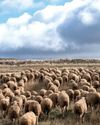
Muse Science Magazine for Kids
ANIMAL FIREFIGHTER TO THE RESCUE
Can animals help manage the risks of deadly wildfires?
3 mins
Muse July 2025: The Story Behind Wildfires

Muse Science Magazine for Kids
FIRE DANGER
WHY THE RISK OF WILDFIRES KEEPS GROWING
4 mins
Muse July 2025: The Story Behind Wildfires

Muse Science Magazine for Kids
The Miller NEW Normal
WHAT TODAY’S WILDFIRES TELL US ABOUT OUR FUTURE
8 mins
Muse July 2025: The Story Behind Wildfires
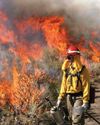
Muse Science Magazine for Kids
WOMEN AND FIREFIGHTING: A GOOD FIT
Jessica Gardetto is a firefighter. Her father was, too. “I grew up with my dad coming home smelling like wildfire and covered in soot,” she says.
1 min
Muse July 2025: The Story Behind Wildfires
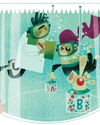
Muse Science Magazine for Kids
What is happening on your fingertips when they get all wrinkly in a hot tub?
—Felix G., age 10, Montana
1 mins
Muse July 2025: The Story Behind Wildfires

Muse Science Magazine for Kids
WHEN the SMOKE CLEARS
THE LINGERING EFFECTS OF THE RECENT PACIFIC PALISADES AND ALTADENA EATON FIRES
6 mins
Muse July 2025: The Story Behind Wildfires

Muse Science Magazine for Kids
PICKING TEAMS
Keep it fair with a strategy that relies on geometry.
2 mins
Muse July 2025: The Story Behind Wildfires
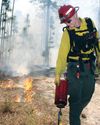
Muse Science Magazine for Kids
SHAN CAMMACK
WILDLIFE BIOLOGIST AND FIRE SAFETY OFFICER
3 mins
Muse July 2025: The Story Behind Wildfires
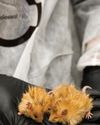
Muse Science Magazine for Kids
Scientists Create Mice With Woolly Mammoth-Like Fur
RESEARCHERS AT A COMPANY IN TEXAS ARE WORKING TO CREATE A LIVING ANIMAL THAT RESEMBLES THE EXTINCT WOOLLY MAMMOTH. Recently, they produced mice with traits of the large mammal. The mice all have coats with mammoth-like fur, and some of the small mammals also have genes that help them store fat. Both features would help the animals survive in the cold Arctic, where the woolly mammoth once lived.
1 min
Muse July 2025: The Story Behind Wildfires

Muse Science Magazine for Kids
Cool Sunshade Added to the Nancy Roman Space Telescope
THE NANCY ROMAN SPACE TELESCOPE IS A NEW TELESCOPE THAT NASA IS BUILDING AND WILL LAUNCH INTO SPACE, LIKELY IN EARLY 2027.
1 min
Muse July 2025: The Story Behind Wildfires
Translate
Change font size

